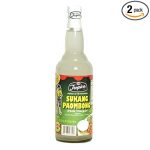Sugar kelp (Latissima saccharina), is a type of brown seaweed that is found in cold ocean waters. It is known for its distinctive long, wide, and flat fronds, which can grow up to several meters in length.
For some producers of seaweed, it could be a new and exciting source of food and some research has been conducted to understand whether it has potential.
Distribution
Sugar kelp is widely distributed in the North Atlantic Ocean, including the coastlines of Europe and North America. It has gained attention not only for its ecological importance but also for its potential as a valuable resource for various purposes, including as a food source. It is being actively explored as a crop in areas off New England for example. The state of Maine is a good site for early exploratory work on this and is also the first US state to allow commercial seaweed farming.
Nutritional Value
Sugar kelp is rich in essential nutrients, including vitamins (such as vitamin K and folate), minerals especially iodine and calcium, and dietary fiber. It is also a source of various antioxidants, which have exciting health benefits. The nutritional content of sugar kelp makes it an attractive option for those looking to incorporate nutrient-dense foods into their diet.
Flavour and Taste
The taste of sugar kelp is generally mild and slightly sweet, which differentiates it from some other seaweed varieties that can have stronger and more oceanic flavors. The mild flavor of sugar kelp can make it more appealing to a broader range of consumers, including those who might be new to seaweed as a food.
Some consumers enjoy this seaweed when it is salt-treated which either means brining or doing dry-packing for example. Camire et al., (2023) from the University of Maine conducted sensory research to understand whether a campus population would enjoy the flavour of salt-treated sugar kelp. Dry-packing involved storing the kelp in 30% w/w kosher salt whilst another batch was immersed in 40% w/v NaCl brine (1:4 ratio) and shaken for 30 min before draining. The samples were both chill-stored. A salad of washed kelp, which removed the salt, shredded carrot, sesame seeds, and sesame dressing was tested. It appeared that the salad prepared with fresh seaweed was less appealing than that using salt-prepared sugar kelp. The research group rightly suggested that the salads created were not that appealing based on the participant’s feedback but given that seaweed is a potential nutritional food source there is scope for creating better salads.
Versatility & Applications
Sugar kelp is versatile and can be used in various culinary applications. It can be incorporated into salads, soups, stews, and even used as a wrap for sushi. Its texture is tender when cooked, and it can add a subtle umami and oceanic note to dishes.
Sustainability
Sugar kelp is known for its rapid growth, which makes it a sustainable and environmentally friendly food source. It requires minimal resources to cultivate and can be farmed in aquaculture systems. The sustainable production of sugar kelp aligns with the growing interest in eco-friendly and ethical food choices among consumers.
Allergen Considerations
It’s important to note that while seaweed, including sugar kelp, is generally considered safe to consume, some individuals may have allergies to certain types of seaweed or iodine. Anyone with known allergies or sensitivities should exercise caution and seek advice from a healthcare professional.
Cultural Acceptance
The acceptance and enjoyment of sugar kelp, or any seaweed, can vary among individuals and cultures. In some regions, seaweed has a long history as a culinary ingredient, while in others, it may be less familiar. Many Asian cultures have long used seaweed in their cuisine and in Wales, lava bread is extremely popular being served in cakes and biscuits. So, consumer preferences and perceptions can influence its adoption in different cuisines.
Ultimately, whether consumers will enjoy sugar kelp compared to other types of seaweed depend on individual taste preferences. Its mild flavor and versatility may make it more approachable for those new to seaweed, but personal taste is subjective. As with any food, experimenting with recipes and incorporating sugar kelp into dishes can be an interesting and potentially profitable way for new product developers to discover its unique flavor and potential health benefits.
References
Camire, M.E., Arya, R., Skonberg, D., Perry, J. (2023) Consumer Evaluation of Salads Made From Salted and Brined Sugar Kelp. IFT Expo. July. Chicago Illinois. USA 2023 Abstract



Leave a Reply